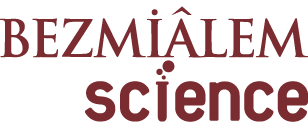ÖZET
2019 sonlarında Çin’de ortaya çıkan şiddetli akut solunum sendromu koronavirüs-2 (SARS-CoV-2) hastalığı, pandemiye neden olan çok önemli bir halk sağlığı sorunudur. Virüsün, SARS-CoV ve SARS ile ilgili, yarasa CoV ile aynı türlerde, beta-koronavirüs ailesinin bir üyesi olduğu tespit edilmiştir. Bulgular, SARS-CoV-2’nin kişiden kişiye damlacık veya temas yoluyla bulaşabileceğini ve bulaşıcılığının SARSCoV’den daha fazla olduğunu göstermektedir. SARS-CoV-2 akut geçen bir hastalık olmakla birlikte, yaşlılarda ve eşlik eden hipertansiyon gibi kronik hastalığı olanlarda daha ölümcül olabilmekte, mortalite oranı %2-3 dolayında seyretmektedir. Hastalıkla birlikte görülen akut solunum sıkıntısı sendromu (ARDS) en önemli ölüm nedenidir. Hastalıkta, sitokin fırtınasına bağlı artmış enflamasyon ve oksidatif stres, hücresel hasar ve organ yetmezliği, ölüme yol açan ARDS’nin ayırt edici özelliğidir. Hastalarda hayat kurtarmak için hızlı, erişilebilir, etkili ve güvenli tedavi yöntemlerine ihtiyaç duyulmaktadır. Bununla birlikte, SARS-CoV-2 hastalığının önlenmesi veya kesin tedavisi için geliştirilmiş bir aşı veya ilaç henüz bulunamamıştır. Hastalığın tedavisine yardımcı olabilecek geniş spektrumlu antiviral veya antimalaryal ilaçlar yanında, antiviral veya antioksidan etkisinden yararlanılmak üzere, yüksek doz intravenöz (i.v.) C vitamini (CV) kullanımı da önerilmektedir. Ancak, yüksek doz i.v. CV uygulaması, doza bağımlı olarak antioksidan etkiden ziyade, pro-oksidan etki ile ciddi oksidatif stres artışına neden olabilmektedir. Hastalarda görülen şiddetli enflamasyon ve yüksek doz CV’nin neden olduğu oksidatif stres, kümülatif olarak, antiviral etki yanında dokularda ciddi enflamasyon artışına oksidatif hasara neden olabilmektedir. Bu derlemede SARS-CoV-2 tedavisi için önerilen yüksek doz i.v. CV’nin pro-oksidan fonksiyonu, antiviral etkinliği ve doza bağımlı istenmeyen olası sonuçları literatür ışığında tartışılacaktır.



